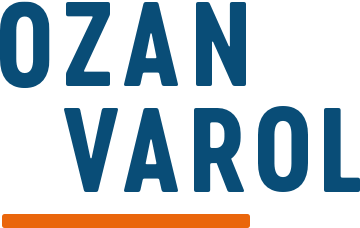For Henri Tajfel, the study of genocide was personal.
He was a Polish Jew who served in the French Army during World War II. He was captured by the Germans but survived the Holocaust because they didn’t realize he was Jewish. Although he escaped death, many of his friends and family members didn’t.
As a result, he dedicated his professional career as a social psychologist to answering a seemingly simple question: What motivates discrimination and prejudice?
Tajfel and his colleagues conducted a series of now-famous experiments. They assigned volunteers to different teams based on their answers to random questions. The subjects were asked, for example, which one of two abstract paintings they liked better. They were then assigned to a group made up of others with the same taste in abstract art.
These were intentionally meaningless, artificially created groups. There was no shared history between the members of each group and no inherent reason for conflict to develop between groups.
Yet the subjects developed group loyalty frighteningly quickly. They were more likely to distribute monetary rewards to the members of their own group—even where they didn’t receive any rewards personally and even when alternative strategies would benefit both groups.
In other words, it took the most trivial and artificial of distinctions for the subjects to divide themselves between “us” and “them.” The simple act of telling people they belong to one group, and not the other, was sufficient to trigger loyalty toward their own group and bias against the others.
But what if you did the opposite? Instead of emphasizing differences between groups, you cited the similarities between them? Instead of narrowing the circle of connection, you widened it?
This is the approach that Martin Luther King, Jr. followed in leading the Civil Rights Movement. He appealed to the shared traits of Americans and used unifying language, referring to people of all ethnicities as his “brothers” and “sisters.” He invoked the country’s founding documents—revered by Americans of all stripes—proclaiming that his dream of racial equality was rooted in the shared American dream. Standing on the steps of the Lincoln Memorial, King said, “When the architects of our republic wrote the magnificent words of the Constitution and the Declaration of Independence, they were signing a promissory note.” He continued, “This note was a promise that all men—yes, black men as well as white men—would be guaranteed the unalienable rights of life, liberty, and the pursuit of happiness.”
He widened the circle, instead of narrowing it.
Decades later, in 2004, a little-known Senate candidate from Illinois named Barack Obama used the same approach in trying to unite a country divided in the aftermath of the Iraq invasion. “There’s not a liberal America and a conservative America — there’s the United States of America,” he proclaimed during his keynote address at the Democratic National Convention. “There’s not a black America and white America and Latino America and Asian America; there’s the United States of America.” He continued, “There are patriots who opposed the war in Iraq and patriots who supported it. We are one people, all of us pledging allegiance to the stars and stripes, all of us defending the United States of America.”
He widened the circle, instead of narrowing it.
The strategy is deceptively simple. If you want to build connection, instead of drawing a small circle to exclude people—by ostracizing, belittling, or ridiculing—draw a bigger circle to include them.
Before you disagree with a friend, point out where you agree.
Before you attempt to persuade someone, emphasize your similarities.
Before you begin a contentious meeting at work, find common ground. Go around the table and ask everyone to take 30 seconds to explain what they like about working there.
Widening the circle doesn’t require any grand gestures. All it takes is a willingness to see past our differences and find our common humanity, even for the briefest of moments.
[Inspiration: The Coddling of the American Mind by Greg Lukianoff and Jonathan Haidt].
P.S. If you liked this article, I’m confident you’ll love my forthcoming book, Think Like a Rocket Scientist.
I’ve been ecstatic about the early reviews. The book was named a “must read” by Susan Cain (NYT Bestselling Author of Quiet), “endlessly fascinating” by Daniel Pink (NYT Bestselling Author of Drive and A Whole New Mind), and “bursting with practical insights” by Adam Grant (NYT Bestselling Author of Originals).
After you pre-order the book (Amazon, Barnes & Noble, and IndieBound), please send your receipt to [email protected]. Within seven days, you’ll get digital access to the book to read on your favorite device. That means you can start reading it NOW, months before the book is published. You’ll also get pre-order bonuses worth at least 10 times the cost of the book. You can head over to this link to learn more about the pre-order bonuses: rocketsciencebook.com.


